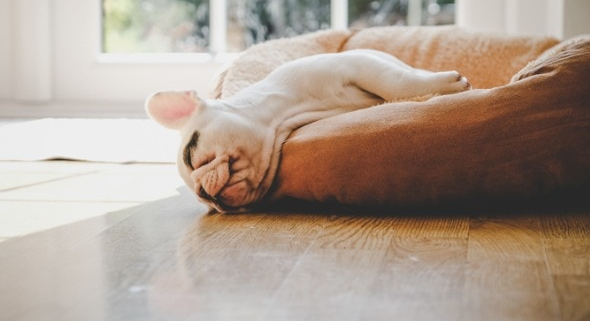Why Do Dogs Twitch in Their Sleep?
Have you ever noticed a sudden, brief twitching while your dog slept? You may be wondering if they were dreaming or experiencing any discomfort. The truth is that these involuntary movements only occur during dream states, and they do not last long. Allow us to explain further below.
Did you know that dogs sleep an average of 12-14 hours daily? During this time, their brain processes information and experiences from the day through dreams. Twitching can be related to active dream cycles in the brain. According to research, an average dog will dream about every 20 minutes, and these dreams will last about a minute.
It is interesting to know that dogs experience the same dream stages as humans, including non-rapid eye movement (NREM), short-wave sleep (SWS), and rapid eye movement (REM). During the REM state, a dog’s eyes move around behind its closed eyelids, and the large body muscles are turned off, so the dream is not physically acted out. The part of the brain that contains these off switches is called the pons, part of the brain stem.
The amount of twitching depends on how much these off switches inhibit muscle movement. For example, dogs that sleep in a curled position will keep their muscles tensed and are less relaxed, which may cause them to twitch less than a dog that rests in a stretched-out position. We do not recommend that you wake your dog up if they are twitching during their sleep unless there is a clear sign of distress. You may gently call your dog’s name until they respond. Calmly speak to them and reassure them that they are safe and secure.
As you can see, twitching is nothing to worry about. The twitches will occur while your dog dreams and will not last long. The last thing you want to do is make a big deal of it which would cause your dog distress.



